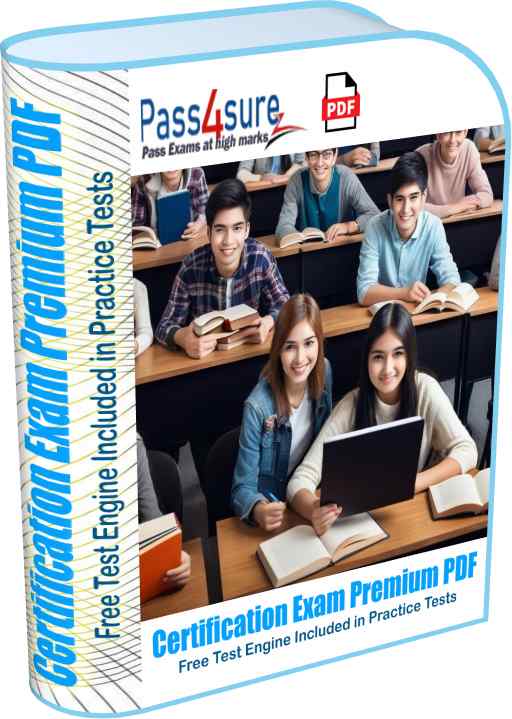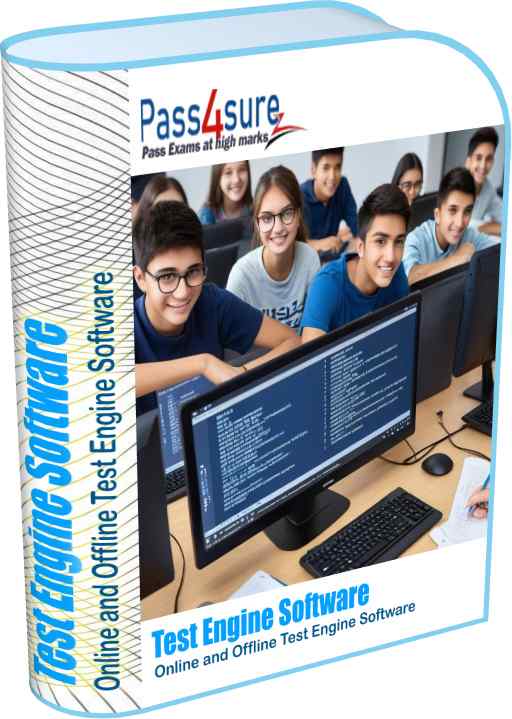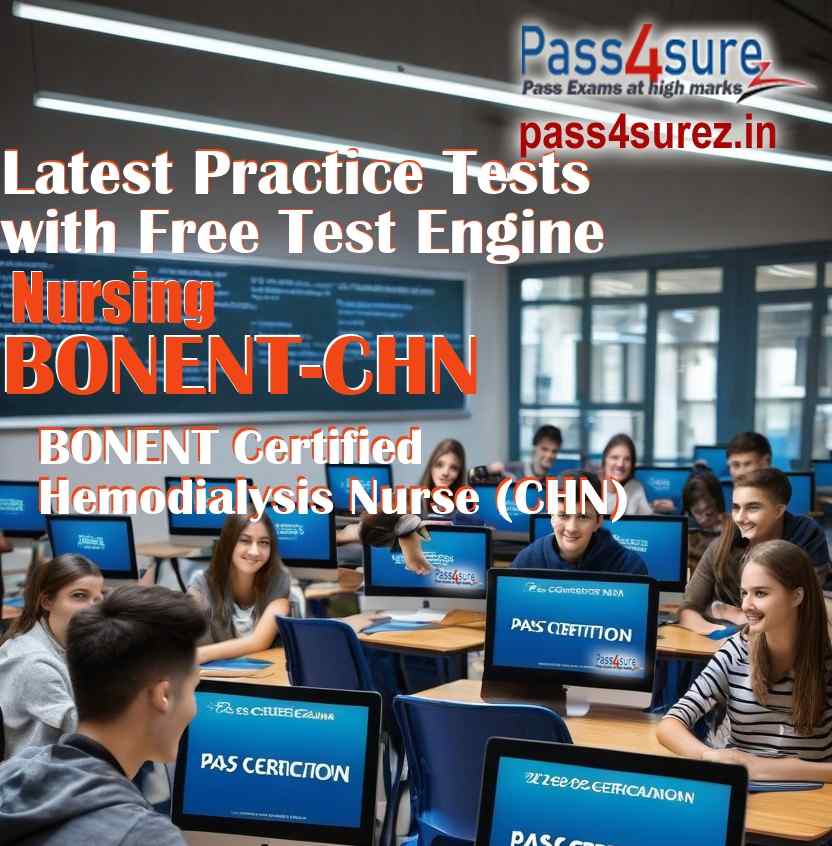| Exam Code | Google-PCD |
| Questions and Answers | 141 |
| Premium Access | Yes |
| Online Test Engine | Yes |
| Comprehensive Q&A | Yes |
| Success Rate | 98% |
| Real Questions | Yes |
| Updated Regularly | Yes |
| Portable Files | ✔ |
| Unlimited Download | ✔ |
| 100% Secured | ✔ |
| Confidentiality | 100% |
| Success Guarantee | 100% |
| Any Hidden Cost | $0.00 |
| Auto Recharge | No |
| Updates Intimation | by Email |
| Technical Support | Free |
| PDF Compatibility | Windows, Android, iOS, Linux |
| Test Engine Compatibility | Mac/Windows/Android/iOS/Linux |
| Sample Questions |  |
Pass4sure Practice Tests are an effective way to prepare for the Google-PCD exam. The practice tests include premium PDF and Test Engine Software. Pass4surez.in provides an extensive question bank to improve your knowledge and help you achieve high marks on the Google-PCD exam.
The Professional Cloud Developer exam questions and answers on Pass4surez.in are regularly verified and updated to ensure they reflect the latest syllabus and topics covered in the real test. The certification exams and entry test exams from pass4surez.com make you familiar with the test environment. The goal is to enhance your knowledge of the Google-PCD exam and enable you to pass it on your first attempt.
The PDF of Google-PCD exam questions and answers provided by Pass4surez.in contains a comprehensive pool of questions and verified answers, including references and explanations where applicable. The objective is not only to help you pass the exam, but also to significantly improve your knowledge of the latest Google-PCD course topics.
 |
|
CERTIFICATION EXAM PREMIUM PDF
Pass4Sure provide premium PDF that contains all the questions and answers that are necessary to make your concepts about the exam topics clear and boost your knowledge about the exam. These questions and answers make you ready to face actual test in test centers. Our team keep on revising material and update the exam questions accordingly. You will feel confident in test center. Our support team keep on helping our customers to make their testing experience best. Our premium PDF files are searchable, convertable and printable at high quality to make book that you can study during traveling or during vacations. Our automated system sends intimation email to our customers on each update. The files in customer download section is overwritten with latest pdf files.
|
| |
|
 |
|
CERTIFICATION EXAM TEST ENGINE
Pass4sure test engine is best certification and examination preparation tool that help you make yourself ready to take the actual exam and get high marks in the exam. Our OTE (Online Test Engine) support all OS Platforms including iOS, Android, Windows, Linux, Chromebook etc and provide up to date experience to get ready for actual test. Our Offline Test Engine is compatible to all windows platforms including latest windows versions. Our test engines helps to familiarize actual test environment and makes you ready to take timed tests. Your performance history and graphs helps you to see when you are ready to sit in actual exam in test center. These test engines uses up to date and latest questions and answers, keeps on updating the questions pool and sends you intimation on each update.
|
Pass4sure Premium PDF and Test Engines support all platforms and devices including mobile devices and computers. You should download sample PDF and Test Engine to evaluate the product before you buy the full version. Our exam samples include some questions that may be or may not be up to date but full version is always up to date.
A Professional Cloud Developer builds scalable and highly available applications using Google-recommended practices and tools that leverage fully managed services. This individual has experience with cloud-native applications, runtime environments, developer tools, and next-generation databases. A Professional Cloud Developer also has proficiency with at least one general-purpose programming language and is skilled at producing meaningful metrics and logs to debug and trace code.
The Professional Cloud Developer exam assesses your ability to:
Design highly scalable, available, and reliable cloud-native applications
Build and test applications
Deploy applications
Integrate Google Cloud Platform services
Manage application performance monitoring
A Professional Cloud Developer builds scalable and highly available applications using Google-recommended practices and tools that leverage fully managed services. This individual has experience with cloud-native applications, runtime environments, developer tools, and next-generation databases. A Professional Cloud Developer also has proficiency with at least one general-purpose programming language and is skilled at producing meaningful metrics and logs to debug and trace code.
Section 1: Designing highly scalable, available, and reliable cloud-native applications
1.1 Designing high-performing applications and APIs. Considerations include:
- Microservices
- Scaling velocity characteristics/tradeoffs of IaaS (infrastructure as a service) vs. CaaS (container as a service) vs. PaaS (platform as a service)
- Evaluating different services and technologies
- Geographic distribution of Google Cloud services (e.g., latency, regional services, zonal services)
- Defining a key structure for high-write applications using Cloud Storage, Cloud Bigtable, Cloud Spanner, or Cloud SQL
- User session management
- Caching solutions
- Deploying and securing API services
- Loosely coupled applications using asynchronous Cloud Pub/Sub events
- Graceful shutdown on platform termination
- Google-recommended practices and documentation
1.2 Designing secure applications. Considerations include:
- Implementing requirements that are relevant for applicable regulations (e.g., data wipeout)
- Security mechanisms that protect services and resources
- Security mechanisms that secure/scan application binaries and manifests
- Storing and rotating application secrets using Cloud KMS
- Authenticating to Google services (e.g., application default credentials, JWT, OAuth 2.0)
- IAM roles for users/groups/service accounts
- Securing service-to-service communications (e.g., service mesh, Kubernetes network policies, and Kubernetes namespaces)
- Set compute/workload identity to least privileged access
- Certificate-based authentication (e.g., SSL, mTLS)
- Google-recommended practices and documentation
1.3 Managing application data. Tasks include:
- Defining database schemas for Google-managed databases (e.g., Cloud Firestore, Cloud Spanner, Cloud Bigtable, Cloud SQL)
- Choosing data storage options based on use case considerations, such as:
- Cloud Storage-signed URLs for user-uploaded content
- Structured vs. unstructured data
- Strong vs. eventual consistency
- Data volume
- Frequency of data access in Cloud Storage
- Following Google-recommended practices and documentation
1.4 Refactoring applications to migrate to Google Cloud. Tasks include:
- Using managed services
- Migrating a monolith to microservices
- Google-recommended practices and documentation
Section 2: Building and Testing Applications
2.1 Setting up your local development environment. Considerations include:
- Emulating Google Cloud services for local application development
- Creating Google Cloud projects
2.2 Writing code. Considerations include:
- Algorithm design
- Modern application patterns
- Efficiency
- Agile software development
- Unit testing
2.3 Testing. Considerations include:
- Performance testing
- Integration testing
- Load testing
2.4 Building. Considerations include:
- Creating a Cloud Source Repository and committing code to it
- Creating container images from code
- Developing a continuous integration pipeline using services (e.g., Cloud Build, Container Registry) that construct deployment artifacts
- Reviewing and improving continuous integration pipeline efficacy
Section 3: Deploying applications
3.1 Recommend appropriate deployment strategies for the target compute environment (Compute Engine, Google Kubernetes Engine). Strategies include:
- Blue/green deployments
- Traffic-splitting deployments
- Rolling deployments
- Canary deployments
3.2 Deploying applications and services on Compute Engine. Tasks include:
- Installing an application into a VM
- Modifying the VM service account
- Manually updating dependencies on a VM
- Exporting application logs and metrics
- Managing Compute Engine VM images and binaries
3.3 Deploying applications and services to Google Kubernetes Engine (GKE). Tasks include:
- Deploying a containerized application to GKE
- Managing Kubernetes RBAC and Google Cloud IAM relationship
- Configuring Kubernetes namespaces and access control
- Defining workload specifications (e.g., resource requirements)
- Building a container image using Cloud Build
- Configuring application accessibility to user traffic and other services
- Managing container lifecycle
- Define deployments, services, and pod configurations
3.4 Deploying a Cloud Function. Types include:
- Cloud Functions that are triggered via an event (e.g., Cloud Pub/Sub events, Cloud Storage object change notification events)
- Cloud Functions that are invoked via HTTP
- Securing Cloud Functions
3.5 Using service accounts. Tasks include:
- Creating a service account according to the principle of least privilege
- Downloading and using a service account private key file
Section 4: Integrating Google Cloud Platform Services
4.1 Integrating an application with data and storage services. Tasks include:
- Read/write data to/from various databases (e.g., SQL, JDBC)
- Connecting to a data store (e.g., Cloud SQL, Cloud Spanner, Cloud Firestore, Cloud Bigtable)
- Writing an application that publishes/consumes data asynchronously (e.g., from Cloud Pub/Sub)
- Storing and retrieving objects from Cloud Storage
- Using the command-line interface (CLI), Google Cloud Console, and Cloud Shell tools
4.2 Integrating an application with compute services. Tasks include:
- Implementing service discovery in Google Kubernetes Engine and Compute Engine
- Reading instance metadata to obtain application configuration
- Authenticating users by using OAuth2.0 Web Flow and Identity Aware Proxy
- Using the command-line interface (CLI), Google Cloud Console, and Cloud Shell tools
4.3 Integrating Google Cloud APIs with applications. Tasks include:
- Enabling a Google Cloud API
- Making API calls with a Cloud Client Library, the REST API, or the APIs Explorer, taking into consideration:
- Batching requests
- Restricting return data
- Paginating results
- Caching results
- Error handling (e.g., exponential backoff)
- Using service accounts to make Google API calls
Section 5: Managing Application Performance Monitoring
5.1 Managing Compute Engine VMs. Tasks include:
- Debugging a custom VM image using the serial port
- Analyzing a failed Compute Engine VM startup
- Analyzing logs
- Sending logs from a VM to Cloud Monitoring
- Inspecting resource utilization over time
- Viewing syslogs from a VM
5.2 Managing Google Kubernetes Engine workloads. Tasks include:
- Configuring logging and monitoring
- Analyzing container lifecycle events (e.g., CrashLoopBackOff, ImagePullErr)
- Analyzing logs
- Using external metrics and corresponding alerts
- Configuring workload autoscaling
5.3 Troubleshooting application performance. Tasks include:
- Creating a monitoring dashboard
- Writing custom metrics and creating metrics from logs
- Graphing metrics
- Using Cloud Debugger
- Reviewing stack traces for error analysis
- Exporting logs from Google Cloud
- Viewing logs in the Google Cloud Console
- Profiling performance of request-response
- Profiling services
- Reviewing application performance (e.g., Cloud Trace, Prometheus, OpenCensus)
- Monitoring and profiling a running applicationv
- Using documentation, forums, and Google support
You can download a free PDF of the Google-PCD practice test and study guide to try before purchasing the premium files. To ace the exam, simply download the Google-PCD exam questions and answers file, memorize the content, and practice with the VCE Exam Simulator. This will ensure you are fully prepared for the real test.
The Google-PCD PDF practice test and exam questions and answers can be accessed on any device, including iPhone, iPad, Android, and Windows. You can download the PDF to your computer or any other device and start studying. Additionally, you can download and install the VCE Exam Simulator for further practice. The Google-PCD PDF is printable in high quality, allowing you to take it with you on vacations or while traveling. Your updated Google-PCD exam files can be accessed anytime from your online account, and you will receive your login credentials immediately after purchase.


